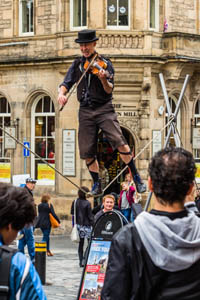Proprioception – Is Yours A Problem?
How many senses do we human beings have? The obvious answer is five – we were all taught about sight, hearing, taste, smell and touch at school – but we have many more. Other senses include theromoception (hot/cold), nociception (pain) and proprioception (body position).
All our senses contribute to our health and well-being but proprioception is of particular importance to everyone who participates in sport or likes to keep active. Good body awareness is known to reduce injury rates whether you play sport or not. So, what is proprioception and how do we train to improve it?
The Science Bit
Specialized sensory receptors are located in our joints, muscles and tendons. These organs, which can collectively be known as “proprioceptors”, send information in the form of nerve impulses to our conscious and subconscious central nervous systems. They relay information about our limb positions, joint movement, vibration and pressure. This allows any sequence of movement to be continually monitored and then modified if necessary.
However, after acute injuries such as muscle pulls or joint sprains and after over-use injuries such as tendinopathy, these nerve endings and nerve pathways can be damaged. The proprioceptors become slow to respond to changing position and this resulting decrease in joint position sense causes decreased co-ordination, poor balance and can lead to falls. This means that after any limb injury, proprioception should be re-trained. However, researchers suggest that 75% of people with an ankle sprain have had previous injuries which have not been fully rehabilitated.
This is a huge statistic and represents unnecessary injuries as proprioception can be easily improved. Remember that minor injuries now long forgotten may have left you with proprioception that is less than perfect.
What do proprioceptive exercises involve?
Exercises to help may include standing still with one foot directly in front of the other as if on a tightrope. You may find it is much easier with one foot in front than the other. Exercises may involve standing still on one foot for 30 seconds, but try this safely, near a wall to hold on to if you wobble. Balance exercises can be walking on your toes or your heels, or may involve more dynamic sports related skills such as hopping, jumping or throwing and catching. Any training exercise must be safe and appropriate for you so if you have any concerns, seek advice from your Physio or Doctor before you try any of these exercises. There is no doubt that a good proprioceptive sense will reduce injury chances so it is worth a few minutes practice to make sure yours is up to scratch.
PS The answer to the very first question – the number of senses we have depends on which neurologist or psychologist you ask. There are defensible answers for 3, 9, 21 or 33 depending on the definition of “Sense” – 5 is definitely wrong!

